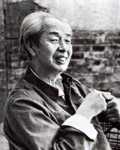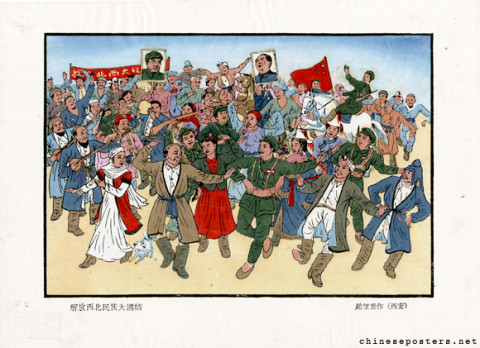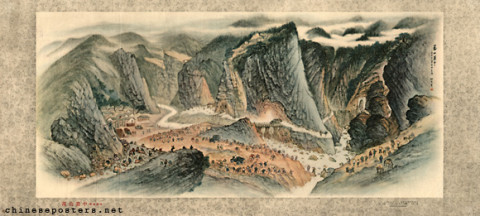 Zhao Wangyun (1906-1977), also known as Xin Guo (新国), was born in Shulu, Zhili (present-day Xinji, Hebei Province). In 1925, he entered the Beiping Jinghua Art College to study. In 1928, he taught at Beiping Normal University, and in 1930, he served as editor-in-chief of Beiping's Honghong (吼虹) magazine. In 1931, he worked as an editor at the Zhonghua Book Company in Shanghai, and in 1933 he worked as a reporter for Tianjin's Ta Kung Pao (大公报). During the Anti-Japanese War, Zhao assisted the warlord Feng Yuxiang in establishing the bimonthly Resistance to the End (抗到底) and the Anti-Japanese War Pictorial (抗战画刊) in Hankou. In 1946, he went to Xi'an and, under the leadership of the Eighth Route Army Office, engaged in anti-Japanese propaganda activities. After the victory of the Anti-Japanese War, he traveled to various parts of the northwest three times and created a large number of works reflecting the lives of ethnic minorities. He advocated "reaching out to tradition with one hand and reaching out to life with the other", setting a new trend in Chinese painting circles and being known as the founder of Chang'an Painting School.
Zhao Wangyun (1906-1977), also known as Xin Guo (新国), was born in Shulu, Zhili (present-day Xinji, Hebei Province). In 1925, he entered the Beiping Jinghua Art College to study. In 1928, he taught at Beiping Normal University, and in 1930, he served as editor-in-chief of Beiping's Honghong (吼虹) magazine. In 1931, he worked as an editor at the Zhonghua Book Company in Shanghai, and in 1933 he worked as a reporter for Tianjin's Ta Kung Pao (大公报). During the Anti-Japanese War, Zhao assisted the warlord Feng Yuxiang in establishing the bimonthly Resistance to the End (抗到底) and the Anti-Japanese War Pictorial (抗战画刊) in Hankou. In 1946, he went to Xi'an and, under the leadership of the Eighth Route Army Office, engaged in anti-Japanese propaganda activities. After the victory of the Anti-Japanese War, he traveled to various parts of the northwest three times and created a large number of works reflecting the lives of ethnic minorities. He advocated "reaching out to tradition with one hand and reaching out to life with the other", setting a new trend in Chinese painting circles and being known as the founder of Chang'an Painting School.
In February 1949, Zhao was arrested and imprisoned by the Guomindang on suspicion of having ties to the Communist Party. He was later rescued by underground workers of the CCP and released on bail. In 1952, Zhao joined the China Democratic League. In 1956, he visited the Soviet Union, Egypt and other countries. From 1957 to 1958, he went to southern Shaanxi to experience life. In 1959, he created "Spring in Northern Shaanxi" (陕北之春) for the Shaanxi Hall of the Great Hall of the People in Beijing.


